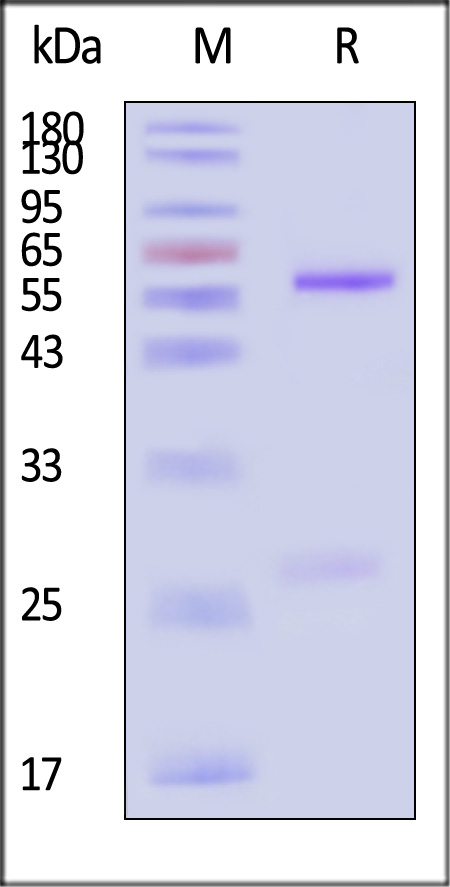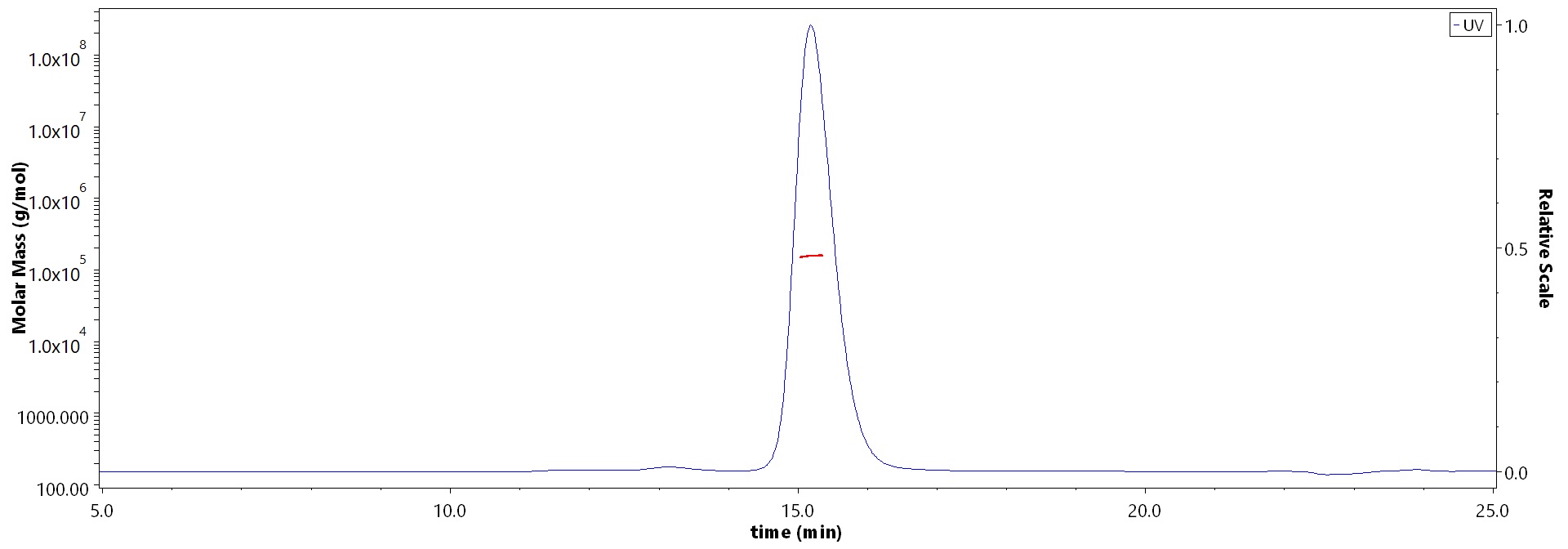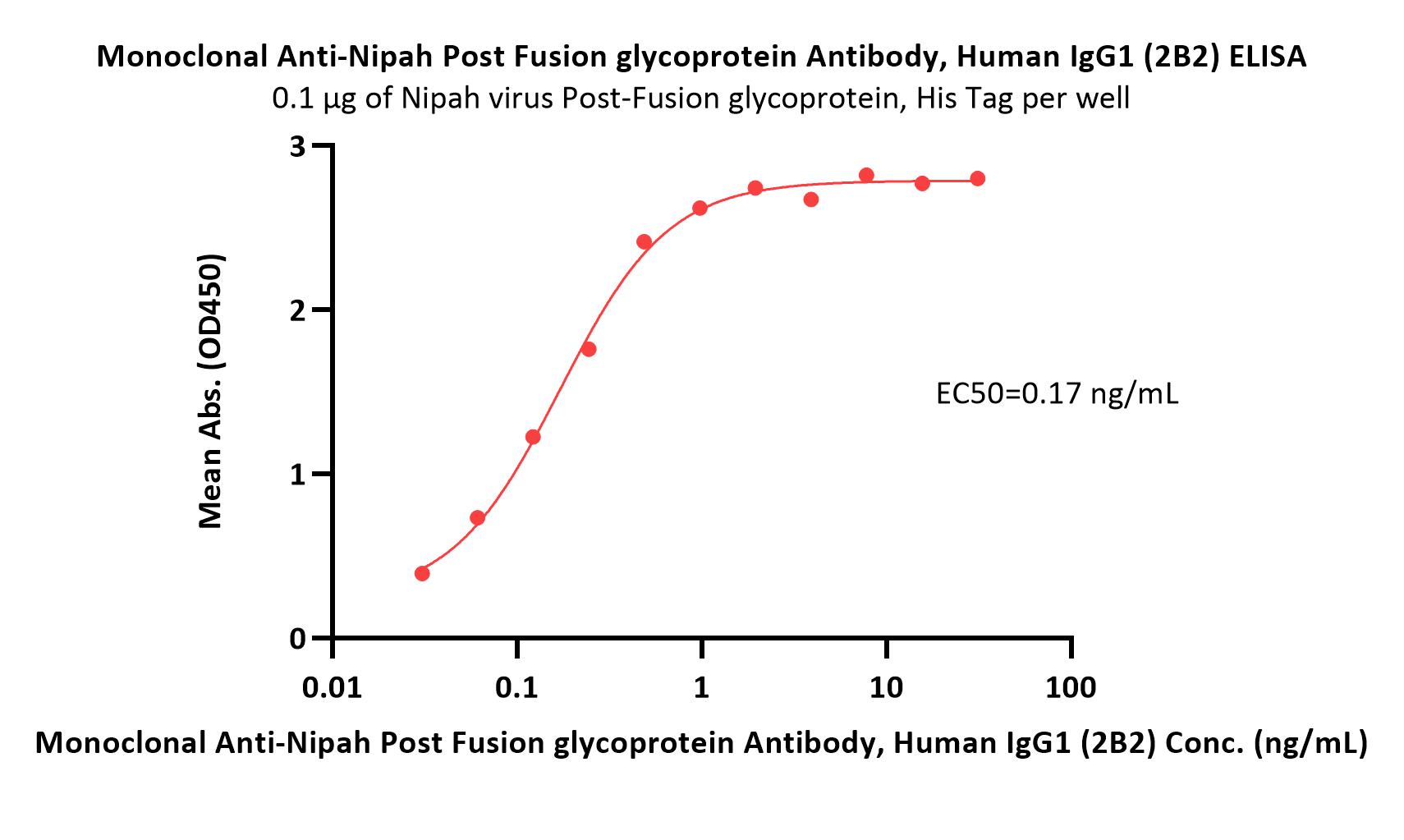Malaysia outbreak survivors retain detectable Nipah antibodies and memory B cells after 25 yearsOng, Ibrahim, Chong
et alJ Infect (2025) 90 (2), 106398
Abstract: To evaluate the long-term humoral immune response to Nipah virus (NiV) in a cohort of 25 survivors after 25 years of post-infection.A total of 25 survivors of NiV infection from the 1998 outbreak were recruited for sample collection. The serum IgG antibody response to NiV antigens, specifically nucleocapsid (N), fusion glycoprotein (F) and attachment glycoprotein (G) was evaluated using ELISA. Additionally, the samples were tested for neutralizing antibodies and memory B cell responses.Detection rates of anti-NiV-F and anti-NiV-G were 56% and 60%, respectively, among the survivors at a 1:100 dilution, whereas only 20% were specifically reactive to rNiV-N. Notably, all samples that tested positive for NiV-F and NiV-G at this dilution also exhibited neutralizing antibodies, highlighting the specificity of these assays. Live virus neutralization assay showed that 72% of survivors had detectable neutralizing antibodies, with varying titers, indicating long-lasting immune memory. Furthermore, memory B cell responses specific to NiV-F and NiV-G were observed in six randomly selected survivors, suggesting the presence of enduring immunological memory.These findings highlight the potential of NiV-F and NiV-G as reliable markers for NiV exposure and underscore the need for continuous surveillance and research. Such efforts are crucial for advancing vaccine development and improving preparedness for future NiV outbreaks.Copyright © 2025 The Authors. Published by Elsevier Ltd.. All rights reserved.
Structures of Langya Virus Fusion Protein Ectodomain in Pre- and Postfusion ConformationMay, Pothula, Janowska
et alJ Virol (2023) 97 (6), e0043323
Abstract: Langya virus (LayV) is a paramyxovirus in the Henipavirus genus, closely related to the deadly Nipah (NiV) and Hendra (HeV) viruses, that was identified in August 2022 through disease surveillance following animal exposure in eastern China. Paramyxoviruses present two glycoproteins on their surface, known as attachment and fusion proteins, that mediate entry into cells and constitute the primary antigenic targets for immune response. Here, we determine cryo-electron microscopy (cryo-EM) structures of the uncleaved LayV fusion protein (F) ectodomain in pre- and postfusion conformations. The LayV-F protein exhibits pre- and postfusion architectures that, despite being highly conserved across paramyxoviruses, show differences in their surface properties, in particular at the apex of the prefusion trimer, that may contribute to antigenic variability. While dramatic conformational changes were visualized between the pre- and postfusion forms of the LayV-F protein, several domains remained invariant, held together by highly conserved disulfides. The LayV-F fusion peptide (FP) is buried within a highly conserved, hydrophobic interprotomer pocket in the prefusion state and is notably less flexible than the rest of the protein, highlighting its "spring-loaded" state and suggesting that the mechanism of pre-to-post transition must involve perturbations to the pocket and release of the fusion peptide. Together, these results offer a structural basis for how the Langya virus fusion protein compares to its Henipavirus relatives and propose a mechanism for the initial step of pre- to postfusion conversion that may apply more broadly to paramyxoviruses. IMPORTANCE The Henipavirus genus is quickly expanding into new animal hosts and geographic locations. This study compares the structure and antigenicity of the Langya virus fusion protein to other henipaviruses, which have important vaccine and therapeutic development implications. Furthermore, the study proposes a new mechanism to explain the early steps of the fusion initiation process that can be more broadly applied to the Paramyxoviridae family.
Novel Roles of the Nipah Virus Attachment Glycoprotein and Its Mobility in Early and Late Membrane Fusion StepsOrtega, Zamora, Monreal
et almBio (2022) 13 (3), e0322221
Abstract: The Paramyxoviridae family comprises important pathogens that include measles (MeV), mumps, parainfluenza, and the emerging deadly zoonotic Nipah virus (NiV) and Hendra virus (HeV). Paramyxoviral entry into cells requires viral-cell membrane fusion, and formation of paramyxoviral pathognomonic syncytia requires cell-cell membrane fusion. Both events are coordinated by intricate interactions between the tetrameric attachment (G/H/HN) and trimeric fusion (F) glycoproteins. We report that receptor binding induces conformational changes in NiV G that expose its stalk domain, which triggers F through a cascade from prefusion to prehairpin intermediate (PHI) to postfusion conformations, executing membrane fusion. To decipher how the NiV G stalk may trigger F, we introduced cysteines along the G stalk to increase tetrameric strength and restrict stalk mobility. While most point mutants displayed near-wild-type levels of cell surface expression and receptor binding, most yielded increased NiV G oligomeric strength, and showed remarkably strong defects in syncytium formation. Furthermore, most of these mutants displayed stronger F/G interactions and significant defects in their ability to trigger F, indicating that NiV G stalk mobility is key to proper F triggering via moderate G/F interactions. Also remarkably, a mutant capable of triggering F and of fusion pore formation yielded little syncytium formation, implicating G or G/F interactions in a late step occurring post fusion pore formation, such as the extensive fusion pore expansion required for syncytium formation. This study uncovers novel mechanisms by which the G stalk and its oligomerization/mobility affect G/F interactions, the triggering of F, and a late fusion pore expansion step-exciting novel findings for paramyxoviral attachment glycoproteins. IMPORTANCE The important Paramyxoviridae family includes measles, mumps, human parainfluenza, and the emerging deadly zoonotic Nipah virus (NiV) and Hendra virus (HeV). The deadly emerging NiV can cause neurologic and respiratory symptoms in humans with a >60% mortality rate. NiV has two surface proteins, the receptor binding protein (G) and fusion (F) glycoproteins. They mediate the required membrane fusion during viral entry into host cells and during syncytium formation, a hallmark of paramyxoviral and NiV infections. We previously discovered that the G stalk domain is important for triggering F (via largely unknown mechanisms) to induce membrane fusion. Here, we uncovered new roles and mechanisms by which the G stalk and its mobility modulate the triggering of F and also unexpectedly affect a very late step in membrane fusion, namely fusion pore expansion. Importantly, these novel findings may extend to other paramyxoviruses, offering new potential targets for therapeutic interventions.
Headless Henipaviral Receptor Binding Glycoproteins Reveal Fusion Modulation by the Head/Stalk Interface and Post-receptor Binding Contributions of the Head DomainYeo, Buchholz, Gamble
et alJ Virol (2021) 95 (20), e0066621
Abstract: Cedar virus (CedV) is a nonpathogenic member of the Henipavirus (HNV) genus of emerging viruses, which includes the deadly Nipah (NiV) and Hendra (HeV) viruses. CedV forms syncytia, a hallmark of henipaviral and paramyxoviral infections and pathogenicity. However, the intrinsic fusogenic capacity of CedV relative to NiV or HeV remains unquantified. HNV entry is mediated by concerted interactions between the attachment (G) and fusion (F) glycoproteins. Upon receptor binding by the HNV G head domain, a fusion-activating G stalk region is exposed and triggers F to undergo a conformational cascade that leads to viral entry or cell-cell fusion. Here, we demonstrate quantitatively that CedV is inherently significantly less fusogenic than NiV at equivalent G and F cell surface expression levels. We then generated and tested six headless CedV G mutants of distinct C-terminal stalk lengths, surprisingly revealing highly hyperfusogenic cell-cell fusion phenotypes 3- to 4-fold greater than wild-type CedV levels. Additionally, similarly to NiV, a headless HeV G mutant yielded a less pronounced hyperfusogenic phenotype compared to wild-type HeV. Further, coimmunoprecipitation and cell-cell fusion assays revealed heterotypic NiV/CedV functional G/F bidentate interactions, as well as evidence of HNV G head domain involvement beyond receptor binding or G stalk exposure. All evidence points to the G head/stalk junction being key to modulating HNV fusogenicity, supporting the notion that head domains play several distinct and central roles in modulating stalk domain fusion promotion. Further, this study exemplifies how CedV may help elucidate important mechanistic underpinnings of HNV entry and pathogenicity. IMPORTANCE The Henipavirus genus in the Paramyxoviridae family includes the zoonotic Nipah (NiV) and Hendra (HeV) viruses. NiV and HeV infections often cause fatal encephalitis and pneumonia, but no vaccines or therapeutics are currently approved for human use. Upon viral entry, Henipavirus infections yield the formation of multinucleated cells (syncytia). Viral entry and cell-cell fusion are mediated by the attachment (G) and fusion (F) glycoproteins. Cedar virus (CedV), a nonpathogenic henipavirus, may be a useful tool to gain knowledge on henipaviral pathogenicity. Here, using homotypic and heterotypic full-length and headless CedV, NiV, and HeV G/F combinations, we discovered that CedV G/F are significantly less fusogenic than NiV or HeV G/F, and that the G head/stalk junction is key to modulating cell-cell fusion, refining the mechanism of henipaviral membrane fusion events. Our study exemplifies how CedV may be a useful tool to elucidate broader mechanistic understanding for the important henipaviruses.


























































 膜杰作
膜杰作 Star Staining
Star Staining















